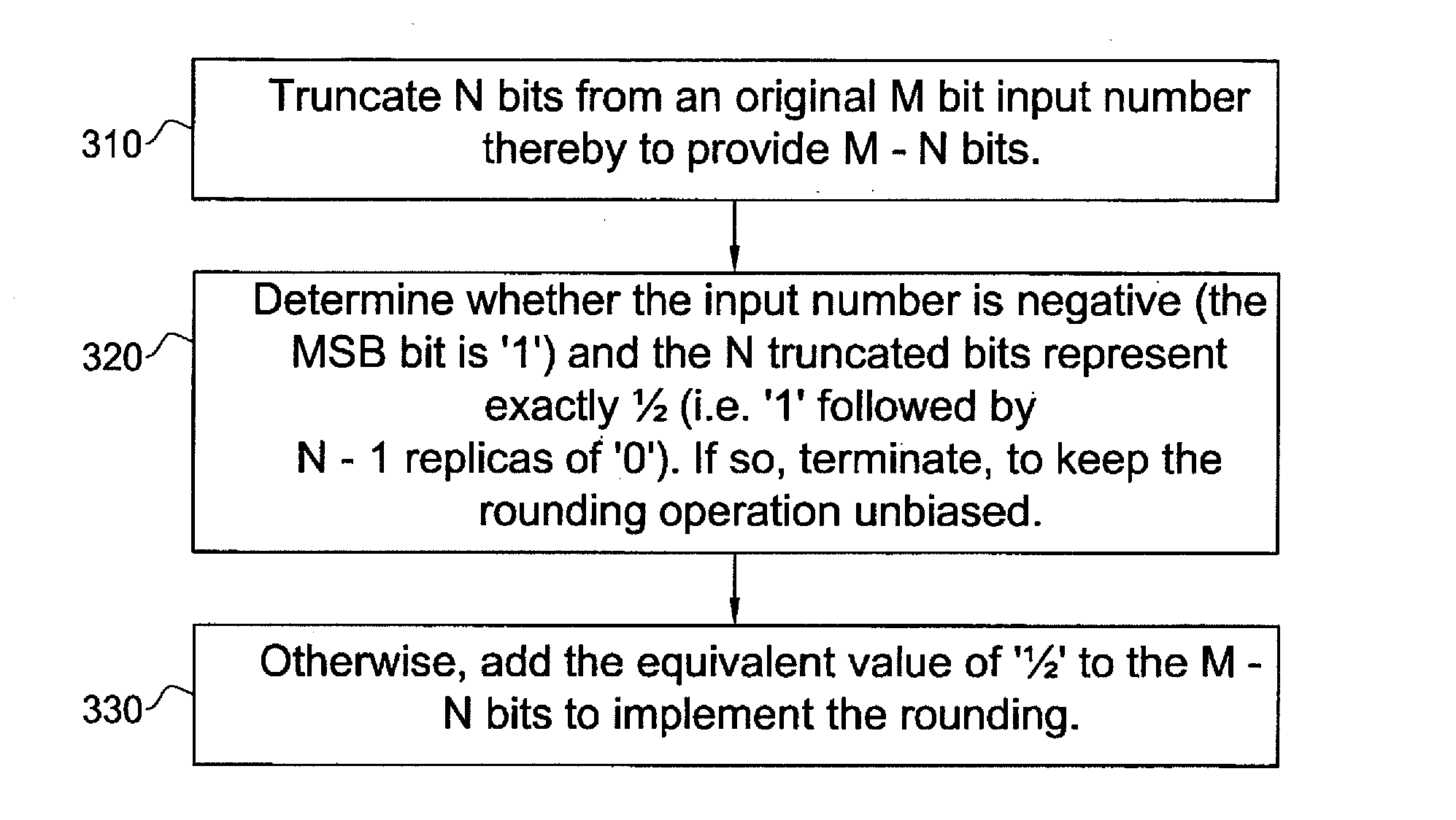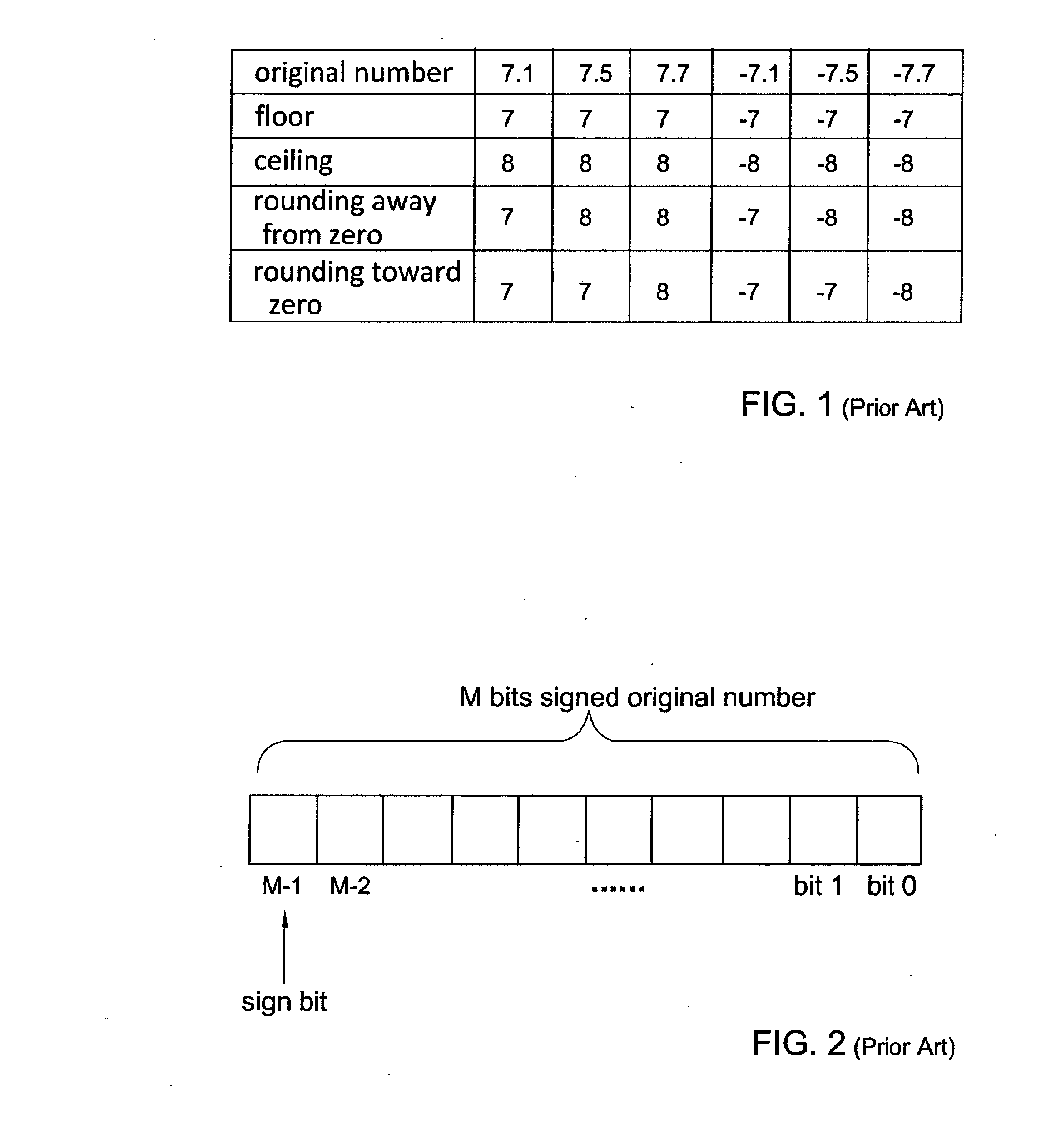Apparatus and methods for hardware-efficient unbiased rounding
a hardware-efficient, unbiased technology, applied in the field of rounding, can solve the problems of loss of precision, less efficient use, undesirable distortion,
- Summary
- Abstract
- Description
- Claims
- Application Information
AI Technical Summary
Benefits of technology
Problems solved by technology
Method used
Image
Examples
Embodiment Construction
[0051]In fixed-point arithmetic it is often desired to reduce the number of bits which represent a number. In order to prevent bias and minimize rounding error, caused by the bits' number reduction, a rounding operation may be performed. Other common bit reduction methods are floor, ceiling and fix (rounding towards zero). The table of FIG. 1 presents some numerical examples of rounding away from and toward zero as opposed to floor and ceiling operations.
[0052]Representation of quantities as signed numbers in 2's complement representation, as illustrated in FIG. 2, is known. The smallest number that can be represented by M bits is −2M−1 and the largest number is 2M−1−1.
[0053]The rounding operation is defined as setting to the nearest integer. When the input lies exactly in the middle between two integers, the rounding is away from zero, for both positive and negative numbers.
[0054]In hardware, conventionally, rounding of N bits off an M bit positive number is performed by adding the...
PUM
 Login to View More
Login to View More Abstract
Description
Claims
Application Information
 Login to View More
Login to View More - R&D
- Intellectual Property
- Life Sciences
- Materials
- Tech Scout
- Unparalleled Data Quality
- Higher Quality Content
- 60% Fewer Hallucinations
Browse by: Latest US Patents, China's latest patents, Technical Efficacy Thesaurus, Application Domain, Technology Topic, Popular Technical Reports.
© 2025 PatSnap. All rights reserved.Legal|Privacy policy|Modern Slavery Act Transparency Statement|Sitemap|About US| Contact US: help@patsnap.com



